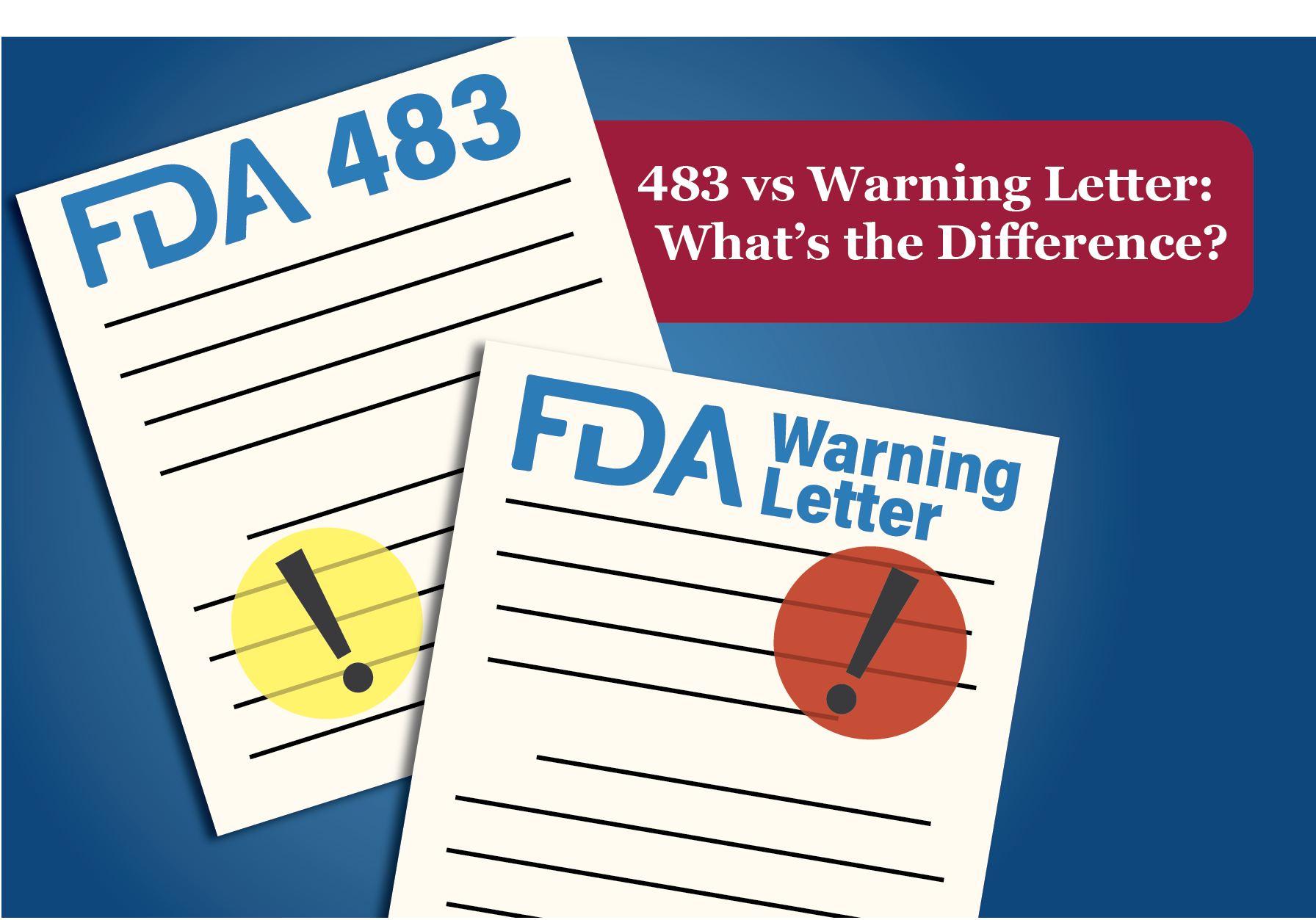The terms “Form 483” and “warning letter” can incite dread for those that market their medical device in the US, but what exactly are they and how do you deal with them? To begin it’s important to note that an “FDA Form 483” and a “warning letter” are a part of the same process but are two different things.
A 483 is issued to a company at the end of an FDA inspection, it documents any conditions that the inspector believes may violate FDA regulation. Its purpose is to notify the company’s management of any conditions observed and allow them to discuss and respond. Once you have received the 483 you only have 15 days to respond thoroughly. A response to a 483 should address each item and provide a timeline for corrective action.1
A 483 is not considered a final agency determination, so it is only a piece of what the agency looks at when determining a company’s compliance. A separate inspection report (the Establishment Inspection Report, completed by the inspector) and your response (which is why it’s important to provide a thorough and timely one) are also evaluated to determine a final judgment. If the agency determines that a serious violation may exist, you will receive an FDA Warning Letter. When you receive a warning letter it is imperative that you create and implement corrective actions and have a detailed plan laid out for every finding. If you responded to the 483 and still receive a warning letter, simply resubmitting your response will not suffice. A warning letter is a serious escalation of any observations during your inspection; they have mandatory requirements and are made public so anyone can search for them online.2
The escalation from a form 483 to a warning letter is something every medical device company wants to avoid, which is why it’s critical to respond to any 483 observations as seriously as if they were enforcement actions. This is the time for the upper management team to analyze their quality system and any processes with nonconformances. While the whole process may feel intimidating, ultimately, it’s the goal that the company will come out on the other side with an improved quality system.
With all the work that needs to go into 483’s and/or warning letters, it is beneficial to consider obtaining some outside experts to help your team through the process. EMMA International has the regulatory expertise to help your team analyze any 483 and/or warning letter findings and respond to the agency effectively – give us a call at 248-987-4497 or email info@emmainternational.com for more information!
1FDA (July 2019) FDA Form 483 Frequently Asked Questions retrieved on 10/08/2019 from: https://www.fda.gov/inspections-compliance-enforcement-and-criminal-investigations/inspection-references/fda-form-483-frequently-asked-questions
2FDA (September 2018) Letters To Industry retrieved on 10/09/2019 from https://www.fda.gov/medical-devices/industry-medical-devices/letters-industry





